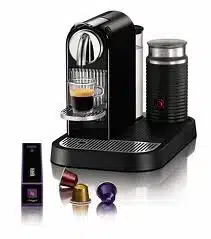While the logline model for an Elevator Statement can be very useful, it’s also helpful to look at an elevator statement from other angles.
Here’s another formula that I’ve successfully used:
Problem, Benefit, Target, Goal paradigm (PBTG)
We solve [problem] by providing [benefit], to help [target] achieve [target’s goal].
If you’d like to, you could also follow this first sentence with a second sentence about your business model:
We make money by charging [customers] to get [benefit].
PBTG for Brands

For Nespresso:
We solve the problem of an inconsistent cup of coffee by providing ready-to-serve individualised premium coffee helping coffee drinkers enjoy that perfect cup every time.
We make money by providing customers an integrated system of state-of-the-art machines and coffee pods that coffee connoisseurs can find in leading malls and online.
For GoToMeeting:
We solve distributed education by providing an online meeting platform to help anyone attend a classroom or meeting regardless of their location.
We make money by charging an annual platform fee for companies that want to distribute their training to anyone, anywhere.
(I trust I have done both brands justice.)
PBTG paradigm for Personal Brands
Let’s try this model for an elevator statement for your own personal brand.
In principle, the model stays the same, although you will need to change the ‘we for’ ‘I’ and also the second sentence to a role based one.
So for a personal brand elevator statement, it would look like this:
I solve [problem] by providing [benefit], to help [target] achieve [target’s goal].
I work as a [role] helping [customers] to get [benefit].
Take the example of the Tax Accountant, from my elevator statement blog that used the logline model.
Using the PBTG paradigm, the Tax Accountant elevator statement would be re-phrased as follows:
I stop people paying excessive tax, by designing individualised tax strategies that help professionals achieve their financial goals.
I work as a Tax Partner with KPMG helping personal clients legitimately keep more income in their pockets.
Then What…
Because by definition, you only have a moment to deliver your elevator statement, it’s optimal that you deliver a concise statement that leads to the listener than asking for more.
And when you are asked, be ready to have plenty of short story examples to show value in a variety of ways:
Then What… On a business level
- That you are the first to do this, or
- Why your offering is different
- Why your offering is better than similar products or services
- How much traction you have in the market
- Why this is difficult for others but that you can deliver better
Then What… On a Personal Brand level
- That you are qualified to do this
- How you have helped similar clients in the past
- How you have benefitted your employer achieve success by employing you
- What branded clients you offer service to
- How long you have been doing this
Finally
Remember the main aim of an elevator statement is to make an impression in the first few seconds, so that the listener engages and asks for more.
* * * * * * * *



